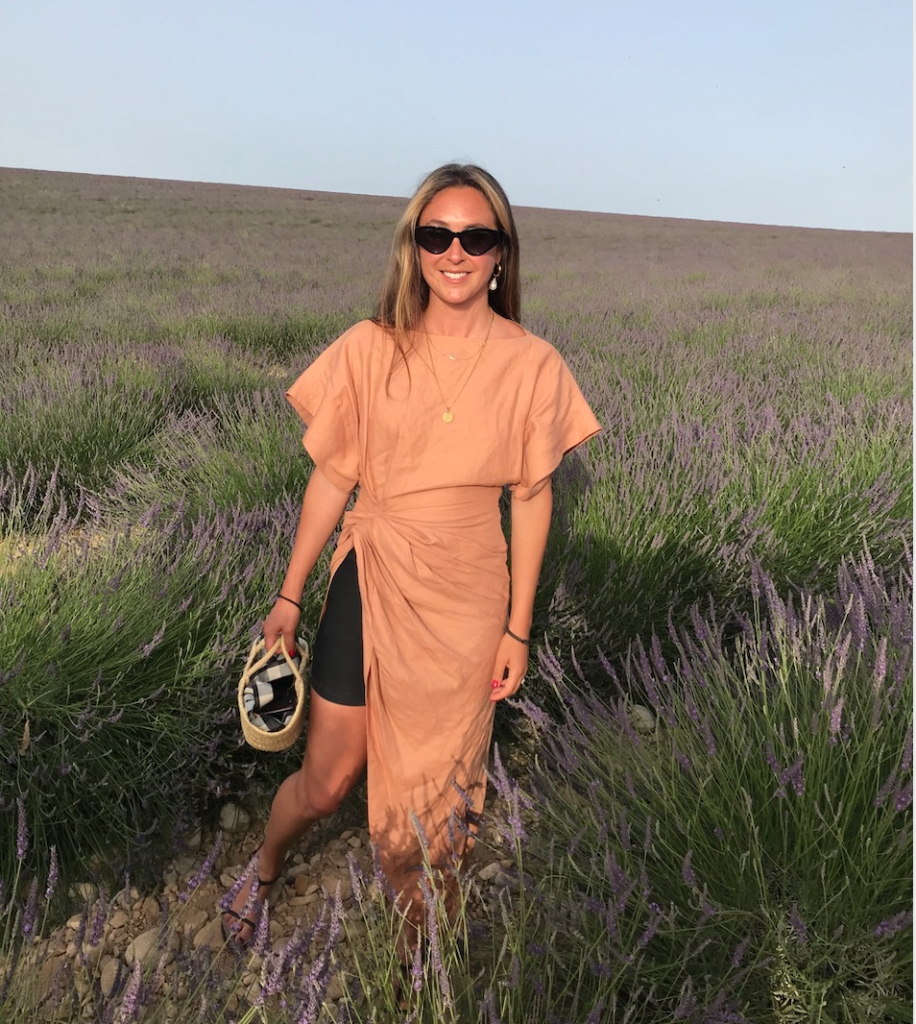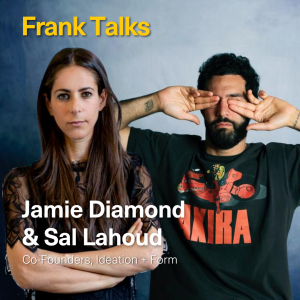This week we chat with Jessica Hodin, Partnerships Manager for Frieze! For the past six years, Jessica has navigated her career in the art fair industry, with positions at Art Basel and Frieze, where she has focused on brand partnerships, audience & strategic development, and fundraising. Before Frieze, she worked for the international art advisory and appraisals firm, Winston Art Group and was Director and Curator of Bleecker Street Arts Club in Manhattan’s West Village. Jessica is also an independent curator and art advisor; recent projects include “Infinite Seed” an outdoor group exhibition in East Hampton, NY and “Nothing to Hide” at Real Art Ways, Hartford, CT. Jessica majored in Art History at Dartmouth College and holds a Master’s Degree in Art Business from the Sotheby’s Institute of Art. We are delighted to bring you her Frank Talk here!
What was your first job in the Arts?
An Internship in the curatorial department for my college museum, The Hood Museum at Dartmouth College.
What was the most useful or important thing you learned at that job?
How to put together an exhibition. Interns were allowed/expected to mount one show in a small gallery of the museum to culminate the experience. We did everything, soup to nuts, and I really learned all the macro and micro bits that go into preparing and executing a show.
Tell us a little more about yourself. When did you realize you wanted to pursue a career in this industry?
I knew very early on I wanted to pursue a career in art but only after my Master’s program in Art Business did I learn of all the various possible roles within the field.
With my job developing the Art Basel Crowdfunding Initiative I started on a path that was more business strategy and partnerships within the art world. Now I am in the partnerships team at Frieze and my role is more of a hybrid art industry / brand marketing.
What do you do now?
As above.
Where are you from?
Born and raised Manhattan girl, upper west side.
What is the arts community like there?
Of course there is a robust and diverse art community in New York, one which is difficult to characterize since it’s so broad and all encompassing. Actually, growing up I was really only aware of the uptown museums and performing arts at Lincoln center, etc. My family or friends were not involved in the fine art world, so that community remained relatively obscure to me. I’ve had the pleasure of discovering and shaping my New York art community for myself.
What is the best piece of advice you can give about working in the art world?
Remember to always be fair to artists above all else. Without them, none of this would be possible. Also, it’s a small world and your reputation can be one of your most important assets so be kind.
What is one of your greatest accomplishments in your career so far?
Starting a gallery from scratch. Even though it didn’t last long, it was a massive undertaking at a young age.
What has been a challenge for you?
Focusing on an expertise and sticking with it. I have a wandering eye and typically I always want to be involved in a variety of different sides of the art world.
What is something you do every day at the office (or your current home office)?
To Do lists!!! I’m compulsive about them.
What is one of the weirdest things you have had to do on the job in your career?
Oh my god, countless! When executing events either for gallery openings or art fair sponsors, you constantly end up getting your hands dirty and putting out fires. I’ve found myself on some very high and shaky ladders (literally). Also, when I worked at a very old art research library, they catalogued art market price records by physically clipping out pictures of paintings from auction catalogues and filing them in manila envelopes in a filing system organized by details of each painting. For example, Renoirs with cats, or Picassos showing nude women’s backsides. I learned so much about Imp/Mod but this was definitely a tedious and not a fire-proof or flood-proof way of doing things.
What defines a good employee? What defines a good boss?
A good boss is someone who is organized, thoughtful, and inspiring yet humble.
A good employee is ambitious and can think critically about the tasks they are performing (because there’s always room for improvement).
What do you think makes a person hirable?
Intelligence and attitude. It is not always necessary to have relevant experience, as long as the person is smart and eager to learn and contribute to the team.
What is your advice to making yourself stand out in your workplace? Any good tips for a giving a great interview?
The way to stand out is to be a contributor, don’t just wait to be told what to do. It sounds obvious but I think it’s easy to get lazy. If you can figure out what your individual strength is and what your contribution to the team would be, emphasize that as a unique asset that your potential employer needs to have.
Remember that your employer most likely wants to be able to have full trust in you. If it’s possible to communicate your trustworthiness in an interview, that gives you a strong upper-hand.
Is there any advice you would like to give people entering the art world?
It’s a tough moment right now with a lot of uncertainty and jobs being cut left and right. But this moment may also yield a great deal of opportunity. Keep your eyes and ears open.
What is the best exhibition you have seen in the last year?
Hannah Levy (no relation) at Casey Kaplan Gallery and Alison Gingeras curated “New Images of Man” at Blum and Poe in LA.
If you could own a work by 5 different artists, who would be in your collection?
Hannah Levy
Eddie Martinez
Egon Schiele
Letha Wilson
Alicja Kwade
What artwork is in your home office?
As I type, currently looking at pieces by Kiki Smith, Mira Dancy, and Adam Mignanelli.
What is your greatest WFH challenge? Or a WFH luxury you don’t want to lose ever again?
I don’t have kids but I do have a very energetic dog; fitting in time for walks and fetch is definitely a big distraction. But I am LOVING my home gym routine.
How do you think art should be shared and/or experienced moving forward?
I do think that the experience of art is usually better in person, but that the new digital tools we’ve developed to share art can certainly help facilitate a proximity to art which is not always attainable.
What is your go to snack in quarantine? And your go to soundtrack?
I’m a POPCORN girl through and through. Butter or Kettle.
I’ve been listening to a lot of Amajovi Jovi.
Since we are all at home and exploring more galleries and museums online, perhaps some for the first time, when the quarantine is lifted, what is your first art filled destination?
I was really looking forward to going to the Dak’Art Biennial in Senegal this year. I hope that I can go once it gets rescheduled. I am also a co-curator on a project for the Manifesta Biennial in Marseille which has been pushed back to end of August and I’m working on getting documentation to be able to get to France to help prepare the show and in general to visit the biennial.
And finally, do you think the art world should be more transparent?
I think that we are getting better and better at democratizing art viewing. The art market however is a different story and, it can be argued, is only understandable and also only relevant to a very small group of people. To me, though, it doesn’t matter who owns what or how they buy it as long as once they have it, they treat it not only as their own but also as shared cultural property. Similar to the real estate economy, the market side will always be segmented and unfair. But unlike the real estate market, where housing is a necessity, owning art is not a necessity. Being able to view and engage with it, however, is.




